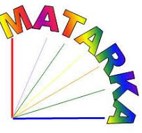Szabad és pásztoroló legeltetés intenzitásfüggő hatásai szikes vegetációban
Absztrakt
A vizsgálatban hortobágyi rövid füvű szikes gyepekben vizsgáltam a legeltetés növényzetre gyakorolt hatásait. A mintaterületeket egyrészt pásztoroló magyar szürke szarvasmarha legeltetéssel kezelték (0,5–2,5 ÁE/ha), továbbá vizsgáltunk szabadon legeltetett (0,1 ÁE/ha) és túllegelt gyepterületeket (4 ÁE/ha) is. Kérdésem a következő volt: (i) Hogyan változik növekvő legelési intenzitás mellett a gyepek fajgazdagsága, funkcionális diverzitása és egyenletessége? Eredményeink szerint a legelési intenzitás nem volt szignifikáns hatással a fajgazdagságra; míg a Shannon diverzitás, az egyenletesség illetve a célfajok borítási értékei közepes legelési intenzitás mellett voltak a legmagasabbak. A legmagasabb Rao-féle kvadratikus diverzitási értékeket alacsony intenzitású, szabad legeltetés mellett kaptuk. Eredményeink alapján látható, hogy nagy funkcionális diverzitás eléréséhez az alacsony intenzitású legeltetés javasolt, azonban a nagy diverzitás és egyenletesség, valamint a célfajok magas borításának eléréséhez, a közepes legelési intenzitás szükséges.
Hivatkozások
Báldi, A., Batáry, P. & Kleijn, D. (2013): Effects of grazing and biogeographic regions on grassland biodiversity in Hungary – Analysing assemblages of 1200 species. – Agric. Ecosyst. Environ. 166: 28–34. doi: https://doi.org/10.1016/j.agee.2012.03.005
Borhidi, A. (szerk.) (2003): Magyarország növénytársulásai. – Akadémiai Kiadó, 610 p.
Casanoves, F., Pla, L., Di Rienzo, J. A. & Díaz, S. (2011): FDiversity: a software package for the integrated analysis of functional diversity. – Methods Ecol. Evol. 2: 233–237. doi: https://doi.org/10.1111/j.2041-210X.2010.00082.x
Connel, J. H. (1978): Diversity in tropical rain forests and coral reefs. – Science 199: 1302–1310. doi: https://doi.org/10.1126/science.199.4335.1302
Deák, B., Tóthmérész, B., Valkó, O., Sudnik-Wójcikowska, B., Bragina, T.-M., Moysiyenko, I., Apostolova, I., Bykov, N., Dembicz, I. & Török, P. (2016): Cultural monuments and nature conservation: The role of kurgans in maintaining steppe vegetation. – Biodivers. Conserv. 25:2473–2490. doi: https://doi.org/10.1007/s10531-016-1081-2
Dengler, J., Janišová, M., Török, P. & Wellstein, C. (2014): Biodiversity of Palearctic grasslands: A synthesis. – Agric. Ecosyst. Environ. 182: 1–14. doi: https://doi.org/10.1016/j.agee.2013.12.015
Díaz, S. & Cabido, M. (2001): Vive la différence: plant functional diversity matters to ecosystem processes. – Trends Ecol. Evol. 16: 646–655. doi: https://doi.org/10.1016/S0169-5347(01)02283-2
Fischer, M. & Wipf, S. (2002): Effect of low-intensity grazing on the species-rich vegetation of traditionally mown subalpine meadows. – Biol. Conserv. 104: 1–11. doi: https://doi.org/10.1016/S0006-3207(01)00149-5
Gilhaus, K., Stelzner, F., Hölzel, N. (2014): Cattle foraging habits shape vegetation patterns of alluvial year-round grazing systems. – Plant Ecol. 215: 169–179. doi: https://doi.org/10.1007/s11258-013-0287-6
Jerrentrup, J. S., Seither, M., Petersen, U. & Isselstein, J. (2015): Little grazer species effect on the vegetation in a rotational grazing system. – Agric. Ecosyst. Environ. 202: 243–250. doi: https://doi.org/10.1016/j.agee.2015.01.007
Kattge, J., Ogle, K., Bönisch, G., Díaz, S., Lavorel, S., Madin, J., Nadrowski, K., Nöllert, S., Sartor, K. & Wirth, C. (2011): A generic structure for plant trait databases. – Methods Ecol. Evol. 2:202–213. doi: https://doi.org/10.1111/j.2041-210X.2010.00067.x
Kelemen, A., Török, P., Valkó, O., Miglécz, T. & Tóthmérész, B. (2013): Mechanisms shaping plant biomass and species richness: plant strategies and litter effect in alkali and loess grasslands. – J. Veg. Sci. 24: 1195–1203. doi: https://doi.org/10.1111/jvs.12027
Kelemen, A., Török, P., Valkó, O., Deák, B., Tóth, K. & Tóthmérész, B. (2015): Both facilitation and limiting similarity shape the species coexistence in dry alkali grasslands. – Ecol. Complex. 21: 34–38. doi: https://doi.org/10.1016/j.ecocom.2014.11.004
Király, G. (szerk.) (2009): Új Magyar Füvészkönyv. Magyarország hajtásos növényei. Határozókulcsok. – Aggteleki Nemzeti Park Igazgatóság, Jósvafő, 616 p.
Lukács, B. A., Török, P., Kelemen, A., Várbíró, G., Radócz, Sz., Miglécz, T., Tóthmérész, B. & Valkó, O. (2015): Rainfall fluctuations and vegetation patterns in alkali grasslands – Self-organizing maps in vegetation analysis. – Tuexenia 35: 381–397. doi: https://doi.org/10.14471/2015.35.011
Mason, N. W. H., Mouillot, D., Lee, W. G. & Wilson, J. B. (2005): Functional richness, functional evenness and functional divergence: the primary components of functional diversity. – Oikos 111: 112–118. doi: https://doi.org/10.1111/j.0030-1299.2005.13886.x
Metera, E., Sakowski, T., Słoniewski, K. & Romanowicz, B. (2010): Grazing as a tool to maintain biodiversity of grassland – a review. – Anim. Sci. Pap. Rep. 28: 315–334.
Teuber, L. M., Hölzel, N. & Fraser, L. H. (2013): Livestock grazing in intermountain depressional wetlands-effects on plant strategies, soil characteristics and biomass. – Agric. Ecosyst. Environ. 175: 21–28. doi: https://doi.org/10.1016/j.agee.2013.04.017
Török, P., Hölzel, N., van Diggelen, R. & Tischew, S. (2016): Grazing in European open landscapes: How to reconcile sustainable land management and biodiversity conservation? – Agric. Ecosyst. Environ. 234: 1–4. doi: https://doi.org/10.1016/j.agee.2016.06.012
Török, P., Kapocsi, I. & Deák, B. (2011): Conservation and management of alkali grassland biodiversity in Central-Europe. – In: Zhang, W. J. (Ed.): Grasslands: Types, Biodiversity and Impacts.Nova Science Publishers Inc., New York, pp. 109–118.
Török, P., Miglécz, T., Valkó, O., Tóth, K., Kelemen, A., Albert, Á., Matus, G., Molnár, V. A., Ruprecht, E., Papp, L., Deák, B., Horváth, O., Takács, A., Hüse, B. & Tóthmérész, B. (2013): Seed weights support social behaviour types—analysis and new thousand seed weight records of the Pannonian flora. – Acta Bot. Hung. 55: 429–472.
Török, P., Tóth, E., Tóth, K., Valkó, O., Deák, B., Kelbert, B., Bálint, P., Radócz Sz., Kelemen, A., Sonkoly, J., Miglécz, T., Matus, G., Takács, A., Molnár, V. A., Süveges, K., Papp, L., ifj. Papp, L., Tóth, Z., Baktay, B., Málnási Csizmadia, G., Oláh, I., Peti, E., Schellenberger, J., Szalkovszki, O., Kiss, R. & Tóthmérész, B. (2016): New measurements of thousand-seed weights of species in the Pannonian Flora. – Acta Bot. Hung. 58: 187–198.
Török, P., Valkó, O., Deák, B., Kelemen, A., Tóthmérész, B. (2014): Traditional cattle grazing in a mosaic alkali landscape: effects on grassland biodiversity along a moisture gradient. – PLOS One 9: e97095. doi: https://doi.org/10.1371/journal.pone.0097095






